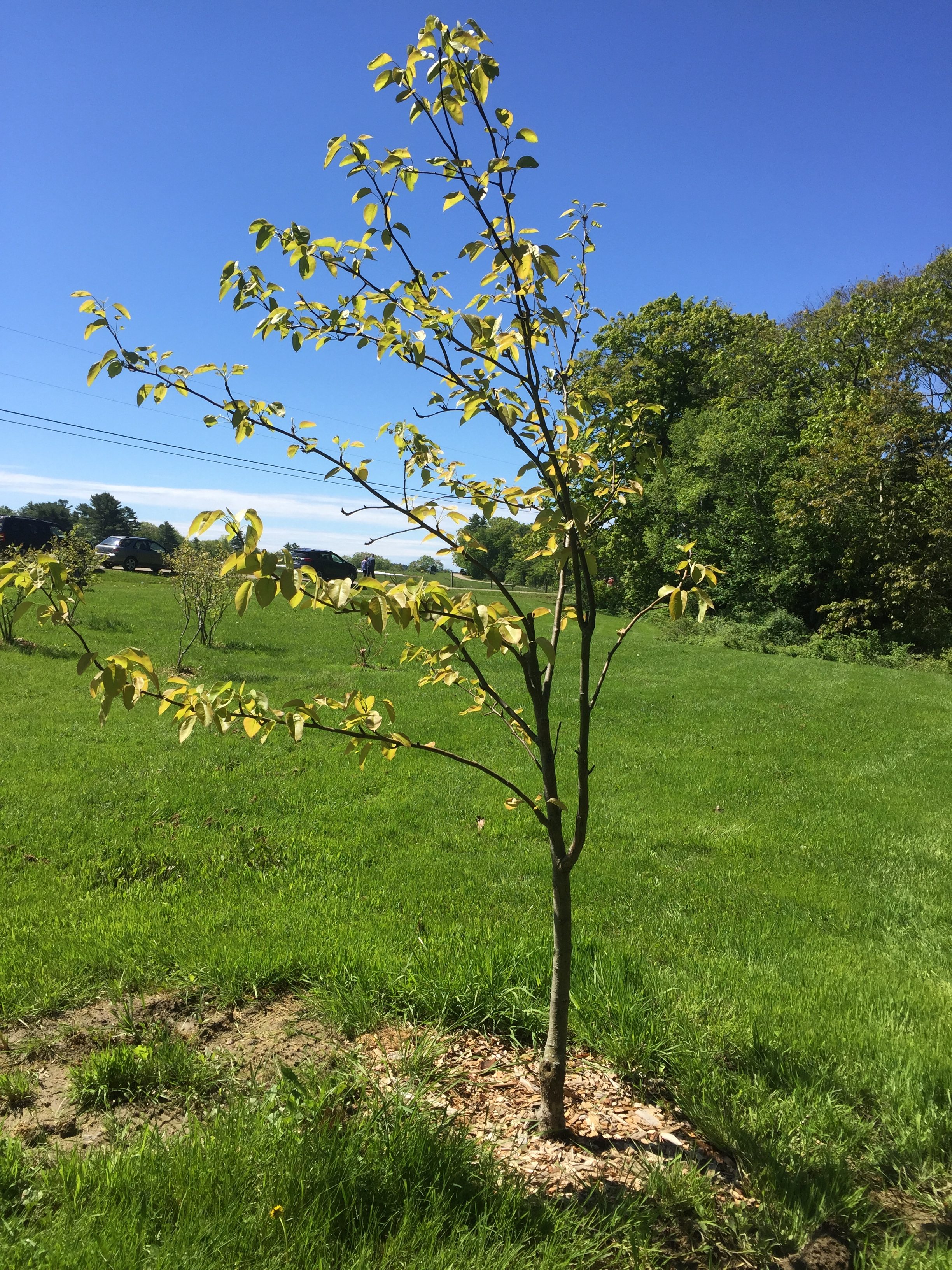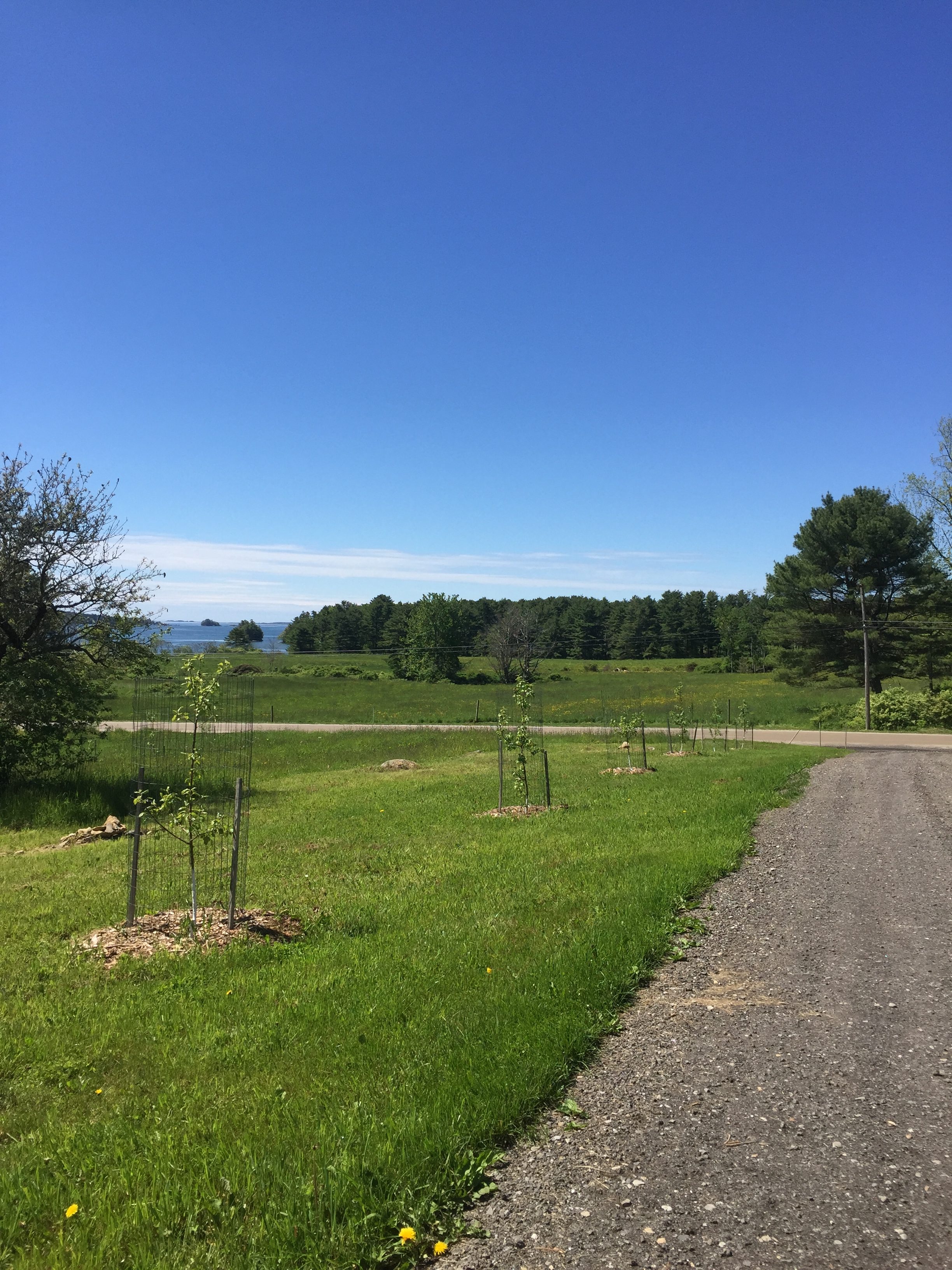

As an educational nonprofit, one of our goals for farm production is to demonstrate how regenerative agriculture can be used as a solution for mitigating climate change. We use regenerative practices across the farm, including no-till seeding and cover cropping, to ensure that our soils remain healthy and full of nutrients. Expanding our orchards is another way we’re contributing to these efforts. Planting trees is good for the soil and air because it sequesters carbon – it takes carbon dioxide from the air, where there is already too much of it, and stores it in the soil where it can be productively utilized. Trees improve the soil conditions and limit soil disturbances in the areas where they’re planted. As the orchard develops, this will be a highly visible area where visitors can learn about regenerative agriculture and see practices put to use.
We invite thousands of visitors to Wolfe’s Neck each year, and diversifying our production is another way we are enhancing the visitor experience. Now, in addition to learning about our milk production in the Afternoon Milking tour and seasonal vegetables, meat, and eggs at the Farm Store, you’ll see how diverse fruit production can be in coastal Maine. The orchard on the slope by the Banter House includes apple trees, cold hardy peaches, plums and pawpaws. It will soon bear peaches for us, too. A future goal is to plant a permanent pollinator refuge – abundant with a variety of native plants that flower throughout the year – within this orchard, so visitors will see what animals and insects come into play in a healthy orchard.

The orchard up in the West Bay campground loop is just as diverse, but with more fruit crops than the Banter orchard. The 60ftx300ft plot is home to apple trees, ever-bearing raspberries, highbush blueberries, beach plums, and grapes. We’ll add even more this season, increasing the size of our plot with asparagus, more highbush blueberries, kiwis, and rhubarb. The diversity of the orchard will give visitors an exciting Farm Store experience, unique each time as it fills with the fruits and vegetables in season.
Because our production is increasing and we’ll have an abundance only in the summer months, the orchards allow us to continue our goals for season extension. We’ve been growing year-round with the addition of large greenhouses for winter production, but another way to maximize our yields is by venturing into value-added products. Jams, jellies, and sauces can turn the excess from abundant yields into products with extended shelf lives instead of what could have otherwise been waste. These products will be sold in the Farm Store, where out of town visitors can take home a piece of the farm. The preservation process will educate teens in our Teen Ag program, too. They’ll experience a hands-on understanding of harvesting food and using preserving methods in the kitchen.